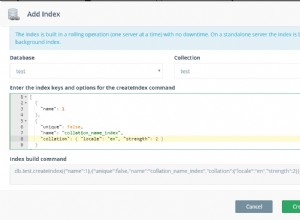Możesz użyć @PropertySource aby odczytać opcje z application.properties lub innego żądanego pliku właściwości. Proszę spojrzeć na przykład użycia PropertySource i działający przykład użycia spring-redis-cache. Lub spójrz na ten mały przykład:
@Configuration
@PropertySource("application.properties")
public class SpringSessionRedisConfiguration {
@Value("${redis.hostname}")
private String redisHostName;
@Value("${redis.port}")
private int redisPort;
@Bean
public static PropertySourcesPlaceholderConfigurer propertySourcesPlaceholderConfigurer() {
return new PropertySourcesPlaceholderConfigurer();
}
@Bean
JedisConnectionFactory jedisConnectionFactory() {
JedisConnectionFactory factory = new JedisConnectionFactory();
factory.setHostName(redisHostName);
factory.setPort(redisPort);
factory.setUsePool(true);
return factory;
}
@Bean
RedisTemplate<Object, Object> redisTemplate() {
RedisTemplate<Object, Object> redisTemplate = new RedisTemplate<Object, Object>();
redisTemplate.setConnectionFactory(jedisConnectionFactory());
return redisTemplate;
}
@Bean
RedisCacheManager cacheManager() {
RedisCacheManager redisCacheManager = new RedisCacheManager(redisTemplate());
return redisCacheManager;
}
}
Obecnie (grudzień 2015 ) wiosna.redis.sentinel opcje w application.properties ma ograniczone wsparcie RedisSentinelConfiguration :
Należy pamiętać, że obecnie tylko Jedi i sałata Lettuce obsługują Redis Sentinel.
Możesz przeczytać więcej na ten temat w oficjalnej dokumentacji.




